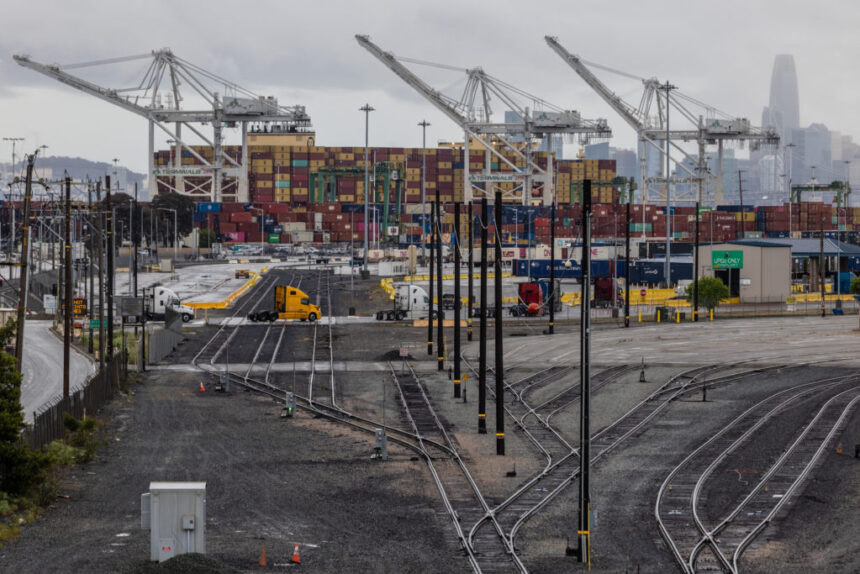The ripple effects of former President Donald Trump’s aggressive trade policies continue to disrupt global commerce in 2024, challenging conventional economic wisdom and creating persistent market uncertainties. While the most visible aspects of the trade war have faded from headlines, economists warn that the structural changes triggered by these tariffs have become embedded in supply chains, price structures, and international trade relationships.
“What we’re witnessing isn’t simply a temporary market adjustment,” explains Dr. Elaine Chen, senior economist at the Toronto Institute for Global Trade. “The tariff regime implemented during the Trump administration fundamentally altered how businesses approach global supply networks, creating lasting changes that continue to influence economic decisions today.”
Recent data from the International Monetary Fund suggests that global trade growth has slowed by approximately 1.8% compared to pre-tariff projections, with certain sectors experiencing disproportionate impacts. Manufacturing businesses that rely on imported steel and aluminum continue reporting cost increases averaging 12-18% above pre-tariff baselines, according to CO24 Business analysis.
Canadian industries have been particularly vulnerable to these persistent effects. The integrated nature of North American supply chains means that even as some tariffs have been modified or removed, the restructuring undertaken by businesses to adapt has created new inefficiencies that continue affecting prices.
“Companies invested millions reconfiguring their supply networks,” notes Michael Robertson, supply chain director at Vaughan Manufacturing. “Those aren’t changes you simply reverse when policies shift. We’re still operating in a fundamentally different landscape than we were five years ago.”
The economic impacts extend beyond direct tariff costs. A comprehensive study by the Peterson Institute for International Economics found that uncertainty surrounding trade policy has depressed business investment by approximately $45 billion annually in affected sectors. This “tariff anxiety” continues influencing corporate decision-making despite changes in administration, creating what economists describe as a lingering drag on potential growth.
“The unpredictability introduced into the system hasn’t dissipated,” says Roberto Martinez, trade policy analyst at Global Commerce Partners. “Businesses now factor in the possibility of sudden policy reversals when making long-term investments, which typically means more conservative approaches and higher risk premiums.”
The agricultural sector offers a stark example of this lasting impact. American farmers, initially targeted by retaliatory tariffs from China, lost significant market share to competitors in Brazil and Australia. Despite efforts to rebuild these trade relationships, CO24 World reporting indicates that U.S. agricultural exports to China remain 22% below projected levels had the trade conflicts never occurred.
Perhaps most concerning for Canadian politics is how these tariff effects continue influencing diplomatic and economic relationships across North America. The USMCA (the NAFTA replacement negotiated under tariff pressure) created new operational complexities that businesses on both sides of the border continue struggling to navigate efficiently.
“The relationship between economic policy and diplomatic leverage has been fundamentally altered,” explains Dr. Sandra Williams, professor of international relations at University of Toronto. “We’re seeing a continued willingness among nations to use trade as a punitive tool rather than focusing on mutual benefit, which represents a significant shift from the post-WWII consensus.”
Consumers ultimately bear much of this ongoing burden. While direct price impacts have partially absorbed into the economy, research from the Federal Reserve Bank of New York indicates that American households continue paying an average of $831 annually in higher prices attributable to tariff-related market distortions.
Canadian households face similar pressures, with the Parliamentary Budget Office estimating ongoing costs averaging $425 per household annually, according to recent Canada News reporting.
As we move deeper into 2024, these economic aftershocks serve as a powerful reminder that trade policies can create impacts extending far beyond their immediate implementation. The question facing policymakers, businesses, and consumers alike is whether this new economic landscape represents a temporary deviation or a fundamental restructuring of how nations approach global commerce in the 21st century.










